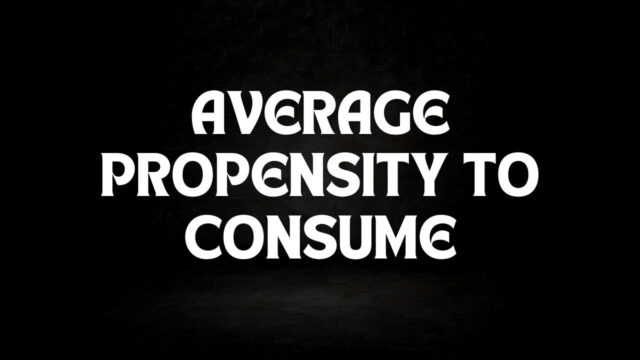
What is the average propensity to consume and what factors influence it
The average propensity to consume (APC) is an economic term that refers to the percentage of income that a household spends on goods and services. In other words, it is the amount of money that a family spends out of every dollar they earn. The APC can be influenced by a variety of factors, including interest rates, inflation, and changes in income. For example, when interest rates are high, families are usually more inclined to save rather than spend.
On the other hand, when inflation is rising, families may increase their spending in order to keep up with the rising costs of goods and services. Changes in income can also impact the APC, as families with lower incomes are typically more likely to spend a larger percentage of their earnings than those with higher incomes. Ultimately, the APC is determined by a number of different factors and can fluctuate over time.
How can businesses use the average propensity to consume to their advantage
Businesses can use the APC to their advantage by understanding how changes in consumer spending patterns can impact their bottom line. For example, if the APC decreases, it indicates that consumers are saving more and spending less. This can lead to lower sales and revenues for businesses, which may then need to adjust their prices or production levels accordingly. On the other hand, if the APC increases, it means that consumers are spending more and this can lead to higher sales and profits for businesses. Therefore, by monitoring the APC, businesses can get a better sense of how changes in consumer behavior will impact their operations.
Are there ways to increase or decrease the average propensity to consume
There are a number of factors that can influence the APC, such as changes in income, taxes, and interest rates. A decrease in income will usually lead to a decrease in consumption, and vice versa. An increase in taxes will also typically lead to a decrease in consumption, as consumers will have less money to spend. Similarly, an increase in interest rates will usually lead to a decrease in consumption, as people will be more likely to save their money instead of spending it. Ultimately, the APC is determined by a variety of factors, and it can be difficult to predict how it will change over time. However, understanding the APC is important for policymakers and businesses, as it can help them make decisions about taxation, interest rates, and other economic policies.
Can the average propensity to consume be used as a predictor for economic growth or recession
The APC is a key indicator of consumer spending patterns and can be used to predict economic growth or recession. A high APC indicates that consumers are spending a large portion of their income on consumption, which can lead to economic growth. However, a high APC can also be a sign of an upcoming recession, as it may indicate that consumers are overspending and borrowing against future income. The APC is just one of many indicators that economists use to predict economic conditions, but it can be a helpful tool in understanding consumer behavior.
What are the implications of a high or low average propensity to consume
There are a number of implications associated with a high or low APC. A high APC can lead to higher levels of debt and inflation, as well as lower levels of saving and investment. This can ultimately lead to an increase in the cost of living and a decline in the standard of living. A low APC, on the other hand, can lead to higher levels of saving and investment, which can help to improve the long-term economic prospects of an individual or household. In addition, a low APC can also help to protect against inflationary pressures. Ultimately, the level of the APC is just one factor that needs to be considered when making decisions about personal consumption expenditure.
How has the average propensity to consume changed over time and what has caused these changes
There are a number of factors that can influence the APC, including changes in interest rates, tax rates, and incomes. For example, when interest rates rise, consumers are less likely to spend, and the APC falls. Similarly, when tax rates increase, consumers have less money to spend, and the APC declines. Finally, when incomes rise, consumers tend to spend more, and the APC increases. By understanding how the APC changes over time, economists can gain insights into future economic trends.
What does the future hold for the average propensity to consume?
The future of the average propensity to consume (APC) is difficult to predict. The APC is determined by a variety of factors, including income, savings, and confidence in the economy. In the short-term, the APC is influenced heavily by current economic conditions. For example, during periods of economic growth, consumers are typically more confident and have more disposable income, leading to higher levels of consumption.
However, during periods of recession, consumers may cut back on spending in order to save money or pay down debt. Looking longer-term, it is difficult to say what will happen to the APC. It could rise or fall depending on a number of factors, such as changes in tax policy or interest rates. Ultimately, predicting the future of the APC is a complex task that depends on a wide range of economic conditions.


































